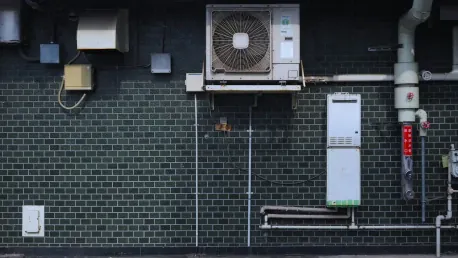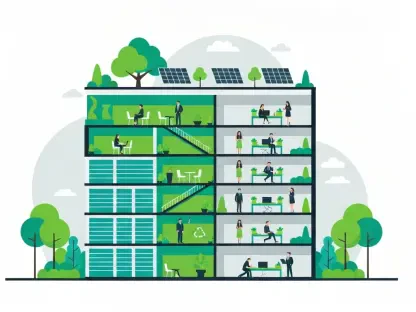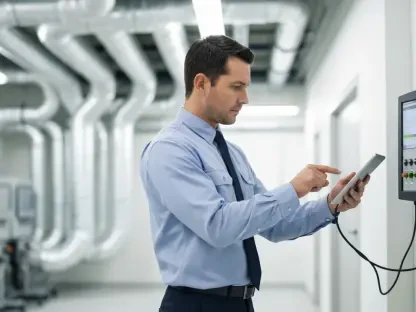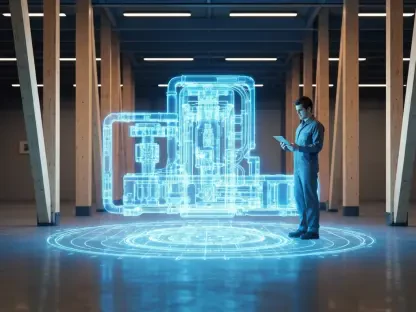In today’s rapidly changing world, maintaining optimal indoor environmental quality is becoming increasingly important. Buildings, both commercial and residential, need to adapt to evolving technology demands, environmental regulations, and cost-saving measures. By 2025, the integration of smart HVAC (Heating, Ventilation, and Air Conditioning) systems has become a pivotal shift, transforming the way indoor climates are managed and signifying a move towards more efficient and sustainable building practices.
The Rise of Smart HVAC Technology
Smart HVAC systems leverage advanced technologies like IoT (Internet of Things) and AI (Artificial Intelligence) to revolutionize heating, ventilation, and air conditioning. These systems provide superior performance, energy efficiency, and user-friendly control, making them indispensable for modern buildings. The smart sensors, data analytics, and machine learning algorithms enable HVAC systems to monitor and adjust in real-time, ensuring maximum comfort and efficiency. These technologies are continually evolving, and the benefits of smart HVAC systems have become even more apparent.
The demand for smarter and more efficient building systems has driven this technological advancement. Smart HVAC systems can adapt to changing environmental conditions, learning from historical data to optimize their performance. This adaptability ensures that buildings are not only comfortable but also energy-efficient. The systems’ ability to predict and react to varying conditions results in substantial energy savings and a significant reduction in operational costs, making them a worthwhile investment for building owners.
Enhancing Indoor Air Quality (IAQ)
Indoor air quality (IAQ) is a top priority for building occupants. Poor IAQ can lead to health issues, decreased productivity, and overall dissatisfaction. Smart HVAC systems improve IAQ by using advanced HEPA filters, continuous monitoring, and precise control of ventilation rates. By consistently maintaining optimal air quality, these systems enhance the well-being of occupants, promoting higher satisfaction and trust in building management. This is especially important in commercial spaces where employee health and productivity are critical, and regulatory standards for air quality are stringent.
Moreover, the transparency and data availability provided by smart HVAC systems allow building managers to demonstrate their commitment to maintaining high IAQ standards. This transparency builds trust among occupants, leading to greater satisfaction and retention. The ability to monitor air quality in real-time and make adjustments based on specific needs ensures that environments remain healthy and comfortable, no matter the external conditions.
Addressing Rising Energy Costs
Energy consumption is a significant expense for any building. Traditional HVAC systems can be inefficient and costly to operate. Smart HVAC systems counter this by optimizing energy use and reducing waste through predictive maintenance and adaptive performance. With the capability to learn from historical data and predict future energy needs, smart HVAC systems help manage and mitigate rising energy costs, offering substantial savings over time. These systems also benefit from the integration of renewable energy sources, further enhancing their efficiency and sustainability.
The financial advantages of smart HVAC systems are evident. By minimizing energy waste, these systems significantly lower utility bills and reduce the overall environmental impact of buildings. Additionally, the use of predictive maintenance ensures that systems remain in peak condition, preventing costly breakdowns and extending the lifespan of the equipment. This combination of reduced energy consumption and maintenance costs makes smart HVAC systems a cost-effective solution for modern buildings.
Meeting Regulatory Requirements and Sustainability Goals
Stringent regulations and environmental concerns are driving the need for more sustainable building practices. Smart HVAC systems align with these goals by reducing carbon footprints and ensuring compliance with current and future regulations. Buildings equipped with smart HVAC systems are seen as more environmentally responsible, contributing to broader sustainability initiatives and enhancing public image. These systems play a crucial role in achieving green building certifications, which are becoming increasingly important in the real estate market.
The role of smart HVAC systems in meeting sustainability goals cannot be overstated. By optimizing energy use and reducing emissions, these systems help buildings achieve lower environmental impact. Compliance with regulations is another critical aspect, as regulatory requirements become more stringent with each passing year. Failing to meet these requirements can result in hefty fines and diminished reputation. By investing in smart HVAC systems, building owners can ensure their compliance and contribute to a healthier planet.
Economic Opportunities for Contractors
The shift towards smart HVAC systems presents new opportunities for contractors through Hardware-as-a-Service (HaaS) models. These models facilitate remote monitoring and maintenance, reducing onsite labor costs and improving service delivery efficiency. By adopting smart HVAC technologies, contractors can offer cost-effective solutions to clients while creating new revenue streams through ongoing service contracts. The barriers to entry for contractors are lower than ever, thanks to advancements in remote diagnostics and maintenance capabilities.
Furthermore, the implementation of smart HVAC systems opens up avenues for contractors to form long-term partnerships with building owners. These partnerships can lead to recurring revenue from maintenance and servicing agreements. The ability to monitor and maintain systems remotely also means that contractors can provide more efficient and responsive service, reducing downtime and enhancing client satisfaction. This new business model enables contractors to differentiate themselves in a competitive market and capitalize on the growing demand for smart building technologies.
Predictive Maintenance and Resource Optimization
Predictive maintenance is a key feature of smart HVAC systems, enabled by advanced data analytics and IoT connectivity. This proactive approach helps identify potential issues before they become major problems, reducing downtime and maintenance costs. Optimizing resource utilization through predictive maintenance extends equipment lifespan and ensures consistent system performance, ultimately benefiting building owners and operators. The ability to foresee and prevent malfunctions not only improves reliability but also minimizes disruptions to building occupants.
In addition, resource optimization leads to more efficient use of materials and labor. Predictive maintenance schedules allow for timely interventions that prevent small issues from escalating into significant problems. This targeted approach reduces waste and improves overall system efficiency. For building managers, the cost savings associated with predictive maintenance can be substantial, as it reduces the need for emergency repairs and prolongs the service life of HVAC equipment. The result is a more reliable, efficient, and cost-effective HVAC system.
Integration with Broader Smart Building Systems
Smart HVAC systems are often the entry point to more comprehensive smart building management systems. By integrating with lighting, security, and energy management systems, smart HVAC creates a cohesive, automated environment. This holistic approach allows for seamless control and monitoring of all building systems, enhancing overall efficiency, security, and occupant experience. The integration also enables the sharing of data between systems, leading to more informed decision-making and improved building performance.
The interconnected nature of smart building systems means that actions in one area can positively impact others. For instance, smart HVAC systems can work in tandem with lighting systems to ensure optimal energy use and comfort levels. When occupancy sensors detect that a room is empty, both the lighting and HVAC systems can adjust accordingly, reducing energy consumption. This level of automation and integration leads to more sustainable and efficient building operations, aligning with modern sustainability goals and occupant expectations.
The Future of Building Management
In today’s rapidly evolving world, maintaining optimal indoor environmental quality is increasingly essential. Both commercial and residential buildings must adapt to the dynamic demands of technology, adhere to stringent environmental regulations, and implement cost-saving measures. As we approach 2025, the integration of smart HVAC (Heating, Ventilation, and Air Conditioning) systems marks a pivotal shift, revolutionizing the management of indoor climates. Smart HVAC systems are designed with advanced sensors and algorithms to monitor and adjust temperature, humidity, and air quality in real-time, ensuring comfort and efficiency. This technology not only enhances occupant well-being but also significantly reduces energy usage and operational costs, aligning with sustainable building practices. Additionally, smart HVAC systems can be seamlessly integrated with other building management systems, allowing for centralized control and improved performance diagnostics. As buildings continue to evolve, the importance of smart HVAC solutions will only grow, becoming a standard in modern construction and renovation projects.









